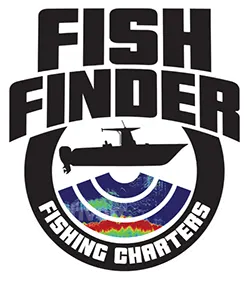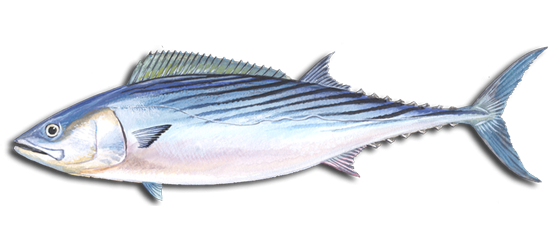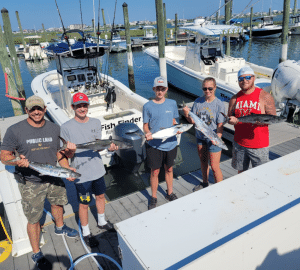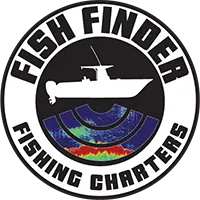Fish of Murrells inlet, SC: How to identify Atlantic Bonito
Welcome to the vibrant world of Atlantic bonito – a fascinating species that brings excitement to any fishing adventure at Murrells Inlet, SC! From their distinctive silver bodies with dark markings to their energetic habits in coastal waters, these fish are a prized catch for anglers. As you delve into the depths of this guide, you’ll uncover the secrets of identifying Atlantic bonito, from their scientific name to their preferred habitats. Get ready to reel in these swift swimmers with expert tips on how to catch them, ensuring an unforgettable fishing experience in the bountiful waters of Murrells Inlet!
Identifying the Atlantic Bonito
Characteristics of the Atlantic Bonito
The Atlantic bonito, scientifically known as Sarda sarda, is easily recognizable by its robust and streamlined body, which is built for speed and agility in the water. These fish typically exhibit a striking pattern of dark stripes on their back, which contrasts sharply with their shimmering, silver-colored lower sides and belly. An adult Atlantic bonito can reach up to 30 inches in length, although the average size is often smaller, around 18 to 24 inches. They have a series of finlets that run from the second dorsal fin to the tail, which aids in their swift movement. Their jaw possesses sharp teeth, indicative of their predatory nature. When you encounter one, you’ll notice its torpedo-shaped body that cuts through the water with ease, a feature that makes them a thrilling catch for any angler.
Atlantic Bonito vs. Similar Species
When fishing in the waters of Murrells Inlet, distinguishing the Atlantic bonito from similar species is crucial. One common look-alike is the false albacore, also known as “little tunny.” While both have streamlined bodies and similar coloration, the Atlantic bonito’s stripes are more distinct and predominantly horizontal, whereas the false albacore exhibits more erratic spotting and worm-like markings. Additionally, the bonito’s stripes extend only to the mid-section of the body, not reaching all the way to the belly like those of the little tunny. Another species often confused with the Atlantic bonito is the skipjack tuna, which has a more pronounced, deeply forked tail and lacks the bonito’s characteristic stripes. By paying attention to these subtle differences, anglers can accurately identify their catch and boast of their Atlantic bonito with confidence. Find more information at SCDNR.
Atlantic Bonito Habits
Patterns in Bonito Behavior
Atlantic bonito showcase distinct patterns in their behavior that can help anglers predict where they might be found. These fish are known for being highly migratory, moving with the seasons to exploit different feeding grounds. In the spring and fall, they are most commonly observed in coastal areas like Murrells Inlet, SC, in search of small fish and baitfish. Bonito are also surface-oriented, often seen breaking the water as they aggressively chase prey, which provides a visual cue for fishermen. Moreover, they travel in schools, so where you find one, you are likely to find many. Understanding these patterns is vital for any angler looking to hook an Atlantic bonito. By being in the right place at the right time and recognizing these behaviors, your chances of a successful catch increase significantly.
Understanding Bonito Feeding Habits
Atlantic bonito are voracious feeders with a diet that significantly influences their location and movement. They primarily feed on small fish such as menhaden, herring, and sardines, along with squid and crustaceans. Bonito are opportunistic predators, often feeding at dawn or dusk when their speed and agility give them an advantage over their prey. Their feeding habits lead them to chase schools of baitfish, which can result in surface disturbances that alert anglers to their presence. To capitalize on their feeding times, fishers should pay attention to the presence of birds diving into the water, as this often indicates that bonito are forcing baitfish to the surface. By understanding these feeding habits, anglers can better time their efforts and select the right lures or bait to attract Atlantic bonito.
Habitats of the Atlantic Bonito
Murrells Inlet: A Hotspot for Bonito
Murrells Inlet, SC, is an angler’s paradise, especially when targeting the swift Atlantic bonito. This area is a renowned hotspot due to its unique combination of warm currents and abundant baitfish, creating an ideal habitat for bonito. The inlet’s proximity to the Gulf Stream attracts these fish, providing them with a rich and accessible food supply. Moreover, the structure of the inlet—marked by jetties, reefs, and sudden depth changes—offers perfect ambush points for bonito to corral and capture prey. For fishermen, this means that a day on the water in Murrells Inlet can be particularly productive. By focusing on areas where currents converge or where there are notable changes in water depth, anglers can increase their chances of encountering these powerful fish and enjoy the thrill of a successful catch.
Conditions Bonito Thrive In
The Atlantic bonito thrives in a range of marine conditions, but it has a particular affinity for warmer waters, which is why areas like Murrells Inlet become hotspots during certain times of the year. These fish prefer a temperature range between 65 and 72 degrees Fahrenheit and are often found in waters with strong, warm currents. Bonito are also known to favor clean, oxygen-rich water, which supports a healthy ecosystem and an abundance of baitfish. Structure plays a significant role as well, with bonito commonly found near underwater features such as ledges, drop-offs, and reefs that provide good hunting grounds for their prey. Anglers seeking to catch Atlantic bonito should monitor water temperatures and clarity, target areas with known underwater structures, and follow seasonal patterns to find these agile predators.
Sarda sarda: The Science behind Atlantic Bonito
Decoding the Scientific Name
The scientific name of the Atlantic bonito, Sarda sarda, offers insight into its classification and characteristics. In taxonomy, the first part of the name ‘Sarda’ identifies the genus to which bonito belongs, grouping it with other closely related species. The repetition of ‘sarda’ for both genus and species is a tautonym, which is relatively rare in scientific nomenclature and often signifies a species’ historical importance or distinctive features. The name itself is believed to have roots in the Mediterranean region, reflecting the fish’s widespread presence and significance across various cultures. Understanding the scientific name of the Atlantic bonito adds depth to an angler’s knowledge, connecting the thrill of the sport with the rich tapestry of marine biology and history.
What Sarda sarda Tells Us About Bonito
The name ‘Sarda sarda’ not only classifies the Atlantic bonito but also sheds light on its biological traits and evolutionary lineage. As members of the mackerel family Scombridae, bonito share many features with tunas and other mackerels, such as a streamlined body built for speed and a physiology adapted for stamina. The repeated name emphasizes the species’ distinctiveness within its genus, indicating a well-established evolutionary path. Moreover, the classification suggests the bonito’s adaptation to a pelagic lifestyle, living in the open ocean rather than near the bottom or coast. This nomadic existence is reflective of their migratory patterns and predatory behavior. For anglers, the name ‘Sarda sarda’ is a nod to the fish’s prowess and the respect it commands in the fishing community.
How to Catch Atlantic Bonito in Murrells Inlet
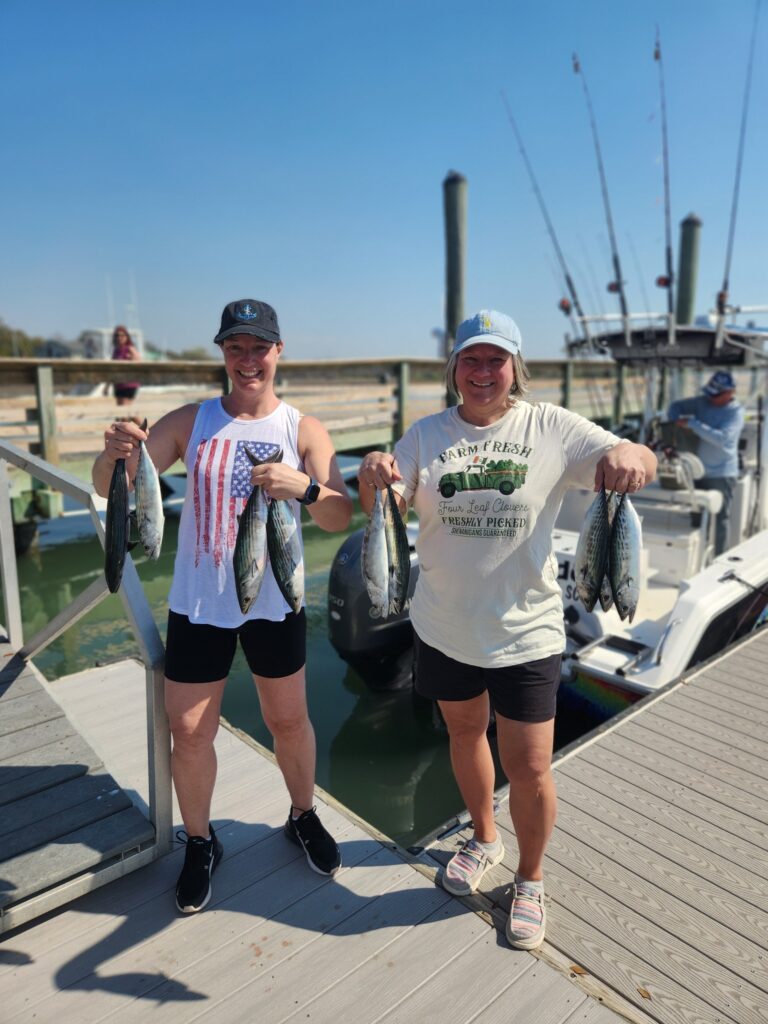
Ideal Times for Catching Bonito
Timing is everything when it comes to catching Atlantic bonito in the waters of Murrells Inlet. These fish are most active and accessible during the transitional periods of spring and fall, aligning with their migration patterns. In the spring, from March to May, bonito move northward along the coast, while in the fall, from September to November, they travel southward. During these times, the water temperature in Murrells Inlet is optimal for bonito activity. Early morning and late afternoon are particularly good times to fish, as bonito feed more aggressively during these hours. Moreover, days following a new moon or full moon can see increased bonito activity due to the stronger tides affecting baitfish movements. By planning fishing trips around these ideal times, anglers can significantly improve their chances of a successful bonito catch.
Tips from Experienced Anglers
Experienced anglers have honed their strategies for catching Atlantic bonito in Murrells Inlet and often share valuable tips. One key piece of advice is to use lures that mimic the appearance and movement of the small fish bonito prey upon. Fast-retrieving metal lures or shiny spoons can be particularly effective, as they reflect light and create a visual attraction. It’s also recommended to keep an eye out for diving seabirds, which can indicate the presence of baitfish and, consequently, bonito feeding below. Additionally, trolling is a common technique, allowing you to cover more area and locate schools of bonito. When a bonito is hooked, maintaining a steady and strong retrieval is crucial, as these fish are known for their fight and can easily escape if given slack. By applying these tactics, anglers can increase their likelihood of an impressive catch.
Experience the Thrill with Our Charter Business
Now that you’re armed with the knowledge on Atlantic bonito and the unique adventure it offers, why not try fishing for them with us? Our charter business, Fish Finder Fishing Charters, specializes in providing unforgettable fishing experiences in Murrells Inlet, SC, with a particular focus on hunting for the swift and elusive Atlantic bonito.
We boast a fleet of fully equipped fishing vessels and a team of experienced captains who know the waters of Murrells Inlet like the back of their hand. They’ll guide you to the best fishing spots, help you recognize the signs of bonito activity, and provide tips to ensure you have the best chances of reeling in a big one.
Not only do you get to enjoy the thrill of the chase and the adrenaline of the catch, but you also get to soak in the beautiful scenery that Murrells Inlet offers. Whether you’re an experienced angler or a first-time fisher, we promise a fishing journey like no other.
To book your fishing trip with Fish Finder Fishing Charters, head over to our website or give us a call. We can’t wait to help you tackle the exciting challenge of catching Atlantic bonito!
Ready for the ultimate bonito adventure in Murrells Inlet? Get in touch with us today!
>> Book Now
>> – Website: www.FishFinderFishing.com
> – Phone: 843-FISHING
